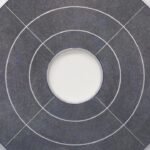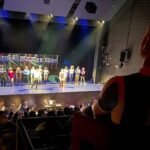
random international on taking over scorpios bodrum
Post-digital art group Random International expands its two-decade-long quest for public co-creation with a triptych installation at the newly-opened Scorpios Bodrum, emerging from a hilly site along Turkey’s coast. Dubbed When Tomorrow Comes, the artwork finds shelter inside a cathedral-like and skylit room as part of The Ritual Space, an exclusive wellness hub where hotel guests can enjoy mind-tingling sessions. Inside the room, ‘the overall atmosphere is like an ‘open arm’ gesture, inviting you to step in and explore,’ Random International’s co-founder Hannes Koch tells designboom.
When Tomorrow Comes is likened to a virtual swarm, featuring different breeds of an evolving digital organism. Each breed, derived from a generative algorithm, presents distinct qualities and traits expressed solely through movement, forming Motherflocks. The interactive installation is commissioned for Scorpios’ 2024 Encounters Program and features a meditative track by Japanese composer Masahiro Hiramoto, further embuing it with an understated sacredeness. Collectors can also choose from three sets of 150 signed, limited edition prints all paired with a unique animation.
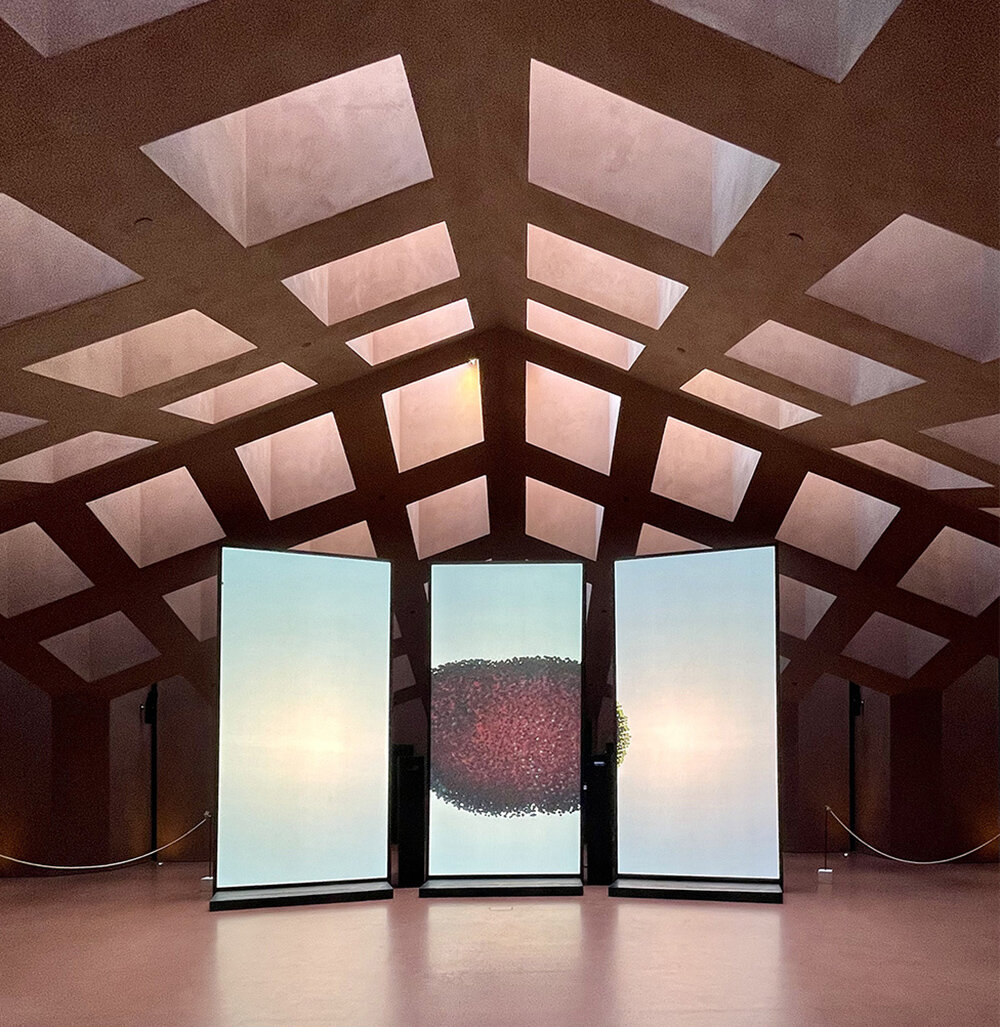
image © designboom
a digital swarm with new possibilities of co-creation
For Hannes Koch, the triptych installation at the Scorpios Bodrum retreat offers a methodology for collective ownership of public art and brings the digital into the physical sphere, inviting viewers to interact with it in ways that open up new possibilities of co-creation while conjuring an almost sentient, collective intelligence. The artist adds: ‘Whatever we see in these collective movements, in these swarming, flocking algorithms, we humans, across cultures, tend to think there’s some emerging consciousness, some life-like behavior.’ On this occasion, designboom sat with Koch who wonderfully decoded the digital swarm, traced the studio’s fascination with flocking algorithms, and pondered on the art of ritualistic spaces. Read the full interview below.
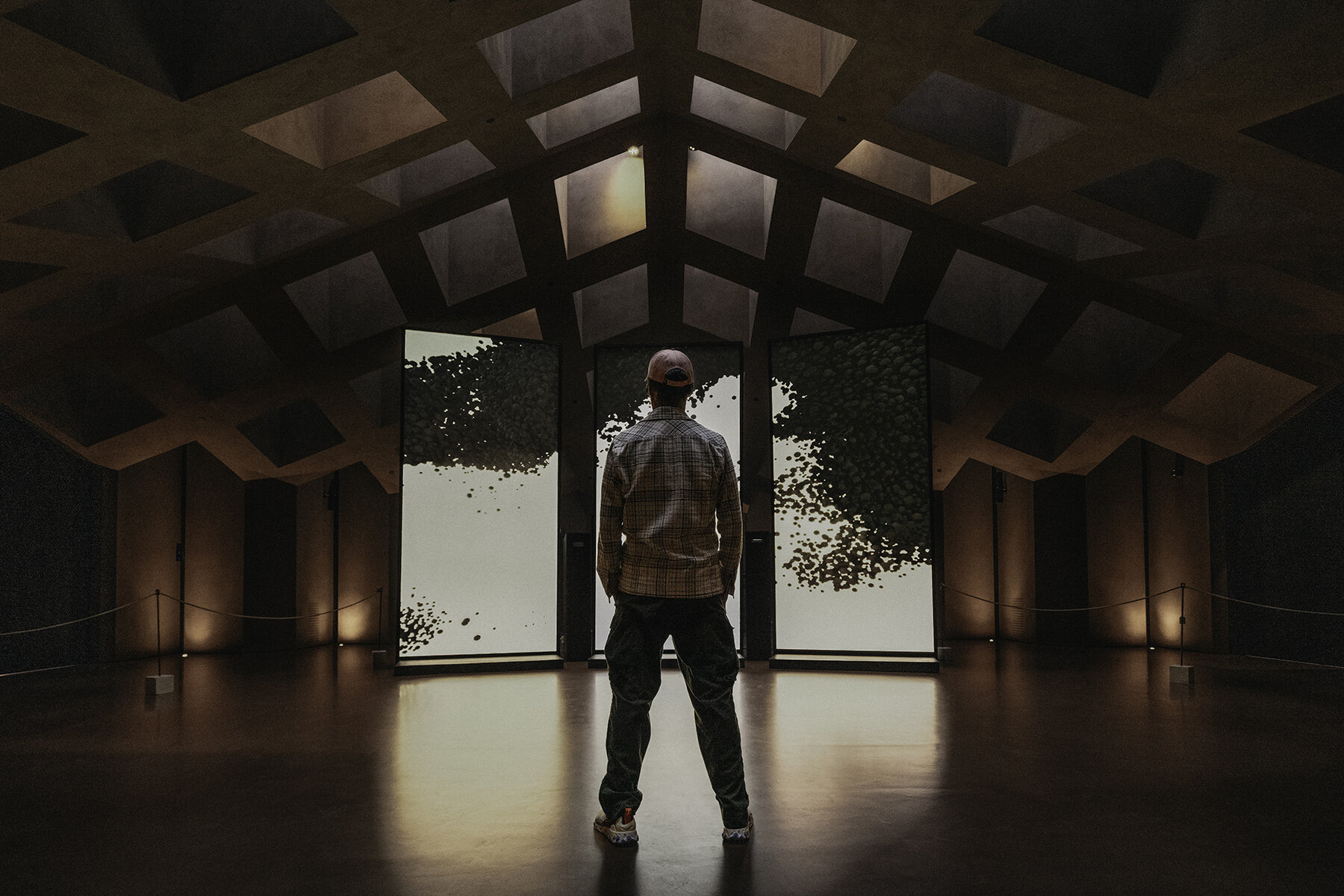
image courtesy Scorpios Bodrum
interview with co-founder hannes koch
designboom (DB): Walk us through the concept behind the triptych at Scorpios Bodrum.
Hannes Koch (HK): When Tomorrow Comes is part of a larger body of work titled Life in Our Minds. It describes the human propensity to assign meaning to moving things and build an emotional relationship with them because we think they’re alive. Whatever we see in these collective movements, in these swarming, flocking algorithms, we humans, across cultures, tend to think there’s some emerging consciousness, some life-like behavior, but the outcome is just ones and zeros. It’s not alive; all the qualities we assign to it happen in our head; our instincts and emotional perception of the world drive this inclination. We’ve been fascinated with swarming and flocking for the last twenty years in various ways.
Aesthetically, there’s a fascination with the efficiency and the reductive qualities of the movements found in nature. The installation is self-organized. It’s only a simulation of nature, yet you still get a whiff of this magic somehow. Of course, you can never be as awesome as nature. I think it’s an entirely futile attempt; we know we will never get to the same depth and the same quality and the same magic, but I think it’s still worth trying by simulating these things in ways we can control and in ways that we can amplify them for human consumption.
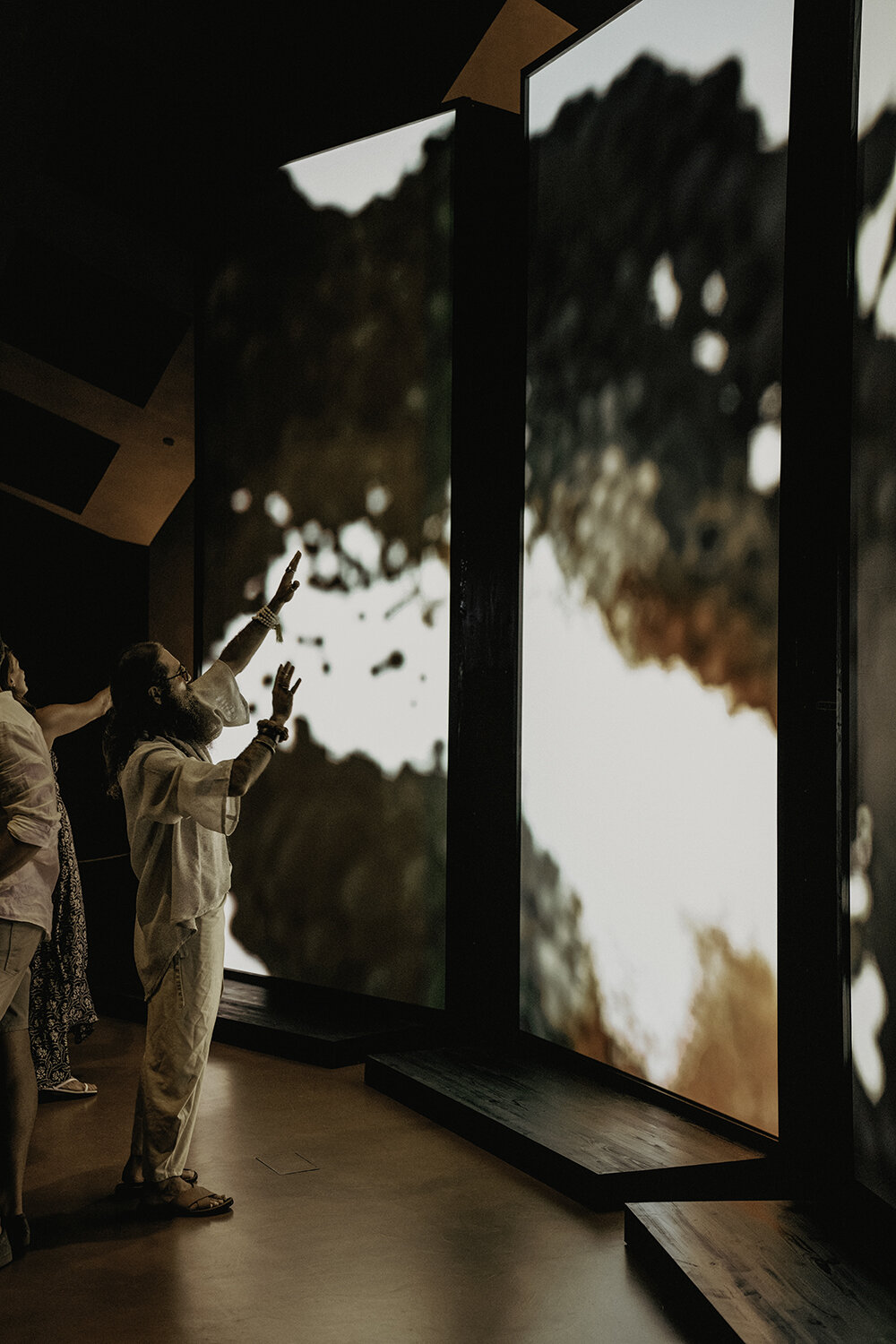
opening night | image courtesy Scorpios Bodrum
HK: That’s sort of the broad context of the installation— a fascination with collective behavior and all its facets and for all kinds of different species. Then, we focus on what happens to us as human viewers, how we open up emotionally when we think our counterpart is alive. We believe it brings out vulnerability. If something, an entity, has only to move as if it were alive to make us believe it’s alive, then that makes us vulnerable. Because only when it’s alive can we build a relationship with it. We open up towards it. We trust it. We start engaging with it emotionally even if it presents different goals, a widely different agenda, and potentially an alien quality. And we think that’s super interesting; it’s neither good nor bad. It’s something we are paying attention to. It fascinates us.
Beyond the decorative layer — bringing color into this digital swarm, playing with it, and making it visually attractive — we felt compelled to push the boundaries in a weird way. We asked ourselves: How strange can something be and still be read by us, by the viewer, as being alive or having some form of connection? I think that’s something we’re going to start exploring much more as a species now that we’re breeding AIs, which will be embedded in moving bits and pieces in the next ten or fifteen years, in robotics. We’re already on that path, and it’s interesting to ask those questions and to see what happens if something behaves naturally, in a way familiar to us and in a way we can trust. This exploration opens the door to vulnerability, which I think is imprinted in us as humans. It’s important to go there and see what happens.
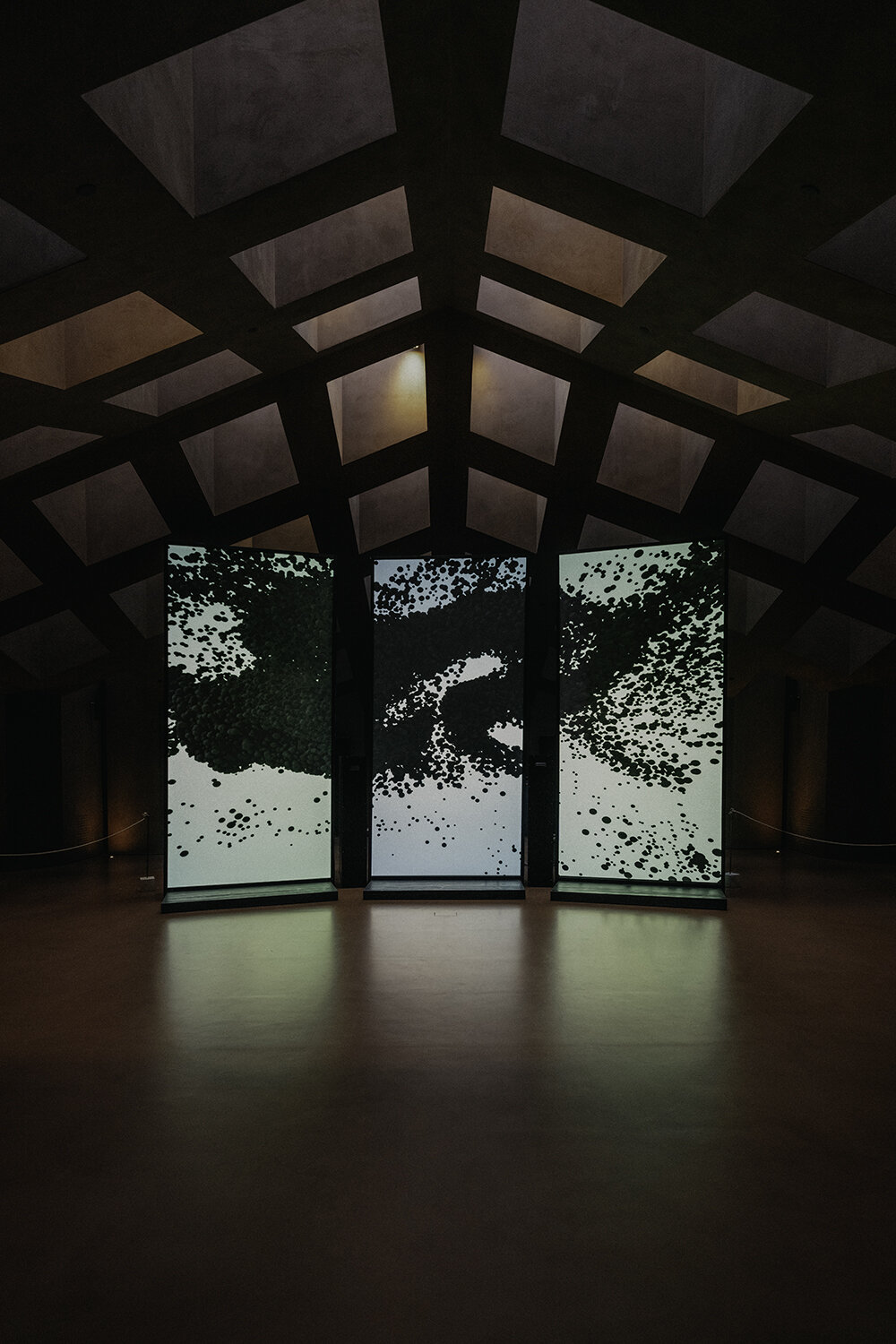
opening night | image courtesy Scorpios Bodrum
DB: You likened The Ritual Space to a cathedral at the opening night. Can you elaborate on that idea? And would you say your work hints at spirituality and sacredness?
HK: I think there’s a void at the moment. This discussion about immersive art, this need to enter the artistic realm with our full body, is not new. Just look at the Sistine Chapel; it has nothing to do with technology. I think there’s a gross misconception, especially when it comes to projection, which is strange. It has much more to do with how our content is delivered.
This may not be the case in countries like Italy and Spain, but people don’t really go to cathedrals anymore. We don’t assemble in those spaces. We’re not exposed to that visual and emotional richness in our everyday life because we lack spirituality. It’s being replaced by either late-stage capitalist beliefs, or by science, or both. There’s nothing intimate and unconditional about this, not anywhere near as much as there used to be. I’m not nostalgic about spaces like cathedrals, but I think there is a reason why they used to play a significant role in different cultures. Something in our human condition makes it essential for us to expose ourselves to such sacred spaces.
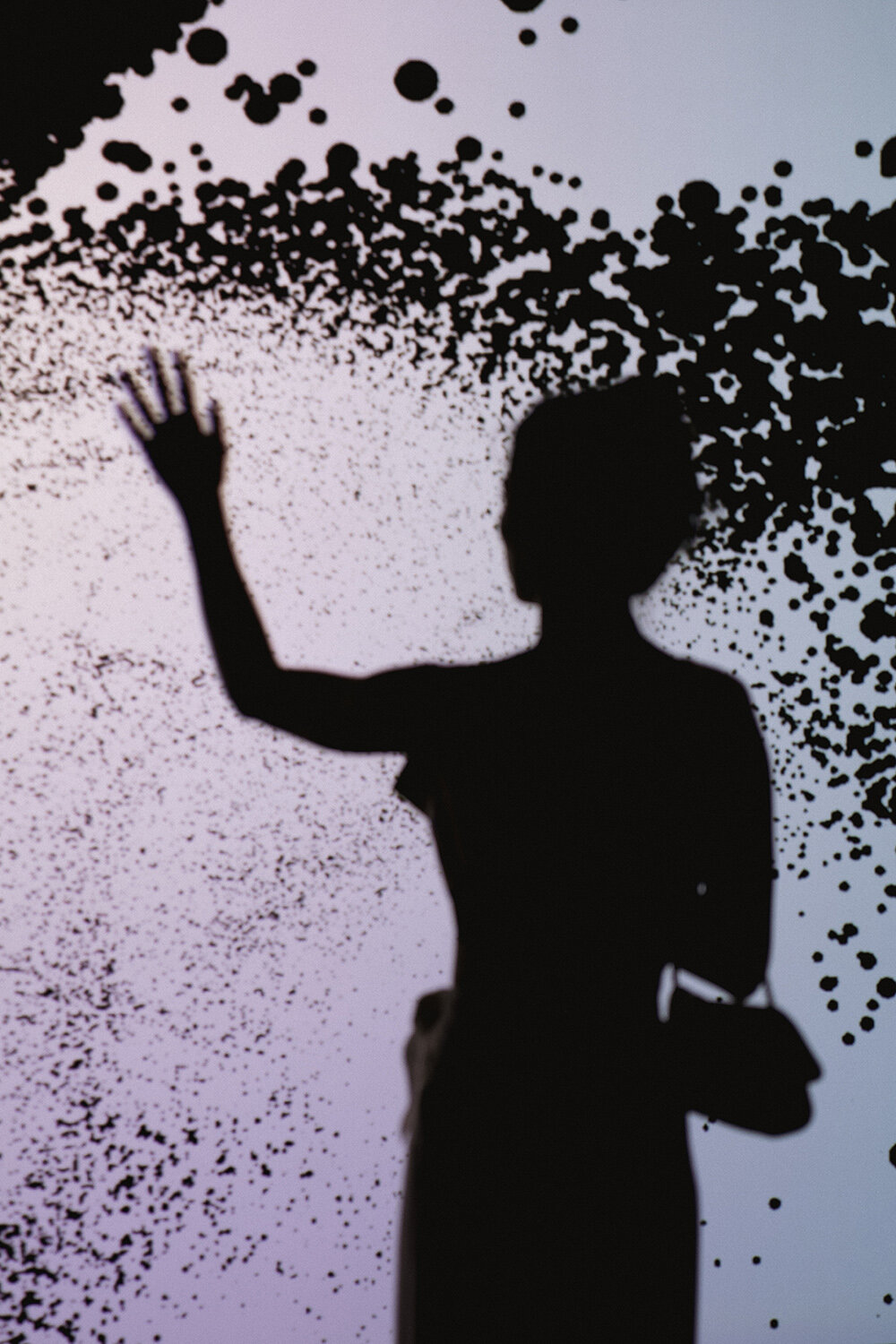
image courtesy Scorpios Bodrum
HK: Now, the triptych form is entirely unreligious; we like interrupting an image. It’s a fundamental and instinctive aesthetic decision. And when we saw The Ritual Space, we were drawn by its very interrupted ceiling through which heaven comes down. There is something very powerful about this element. The overall atmosphere is like an ‘open arm’ gesture, inviting you to step in and explore. And we had only seen a photograph of the space. We immediately said yes because there is something special about presenting your work in a ritualistic context.
I prefer this to something like Burning Man ten out of ten times. This space has an understatedness in how there is nothing else that distracts, and it goes great with a triptych design, which gives the work a much more sculptural presence. We don’t like the flatness of projections. We prefer bringing in the human body, an inherently three-dimensional, physical presence that echoes these large, exaggerated, and back-projected screens. And the projected quality of the image is much more gentle on the eye. We don’t really like LCD screens that get excessively brighter the closer you move toward them.

